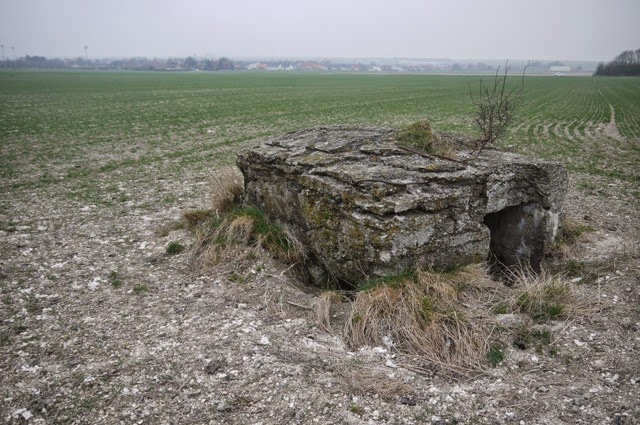Had a very interesting day at Loos on our recent trip to France. A walk around the Hohenzollern Redoubt and the edge of the Quarries revealed some new remains that we had not seen before. This area was at the heart of the Battle of Loos in 1915. The area was the scene of initial success but following fierce fighting the Germans managed to regain lost ground. The lines then settled down for the next three years, with incessant mining and trench warfare. Unfortunately the weather was misty on our visit so some of the photos are not that great.
Below: Trench map of the lines in the Hohenzollern Redoubt and Quarries area before the battle.
Below: Trench map at the end of the Battle. The lines were to remain so for the next three years, with some intense mine warfare as can be seen by the craters marked on the map. Some very good remains of the German front line, which include, trenches, dugouts, mine craters and remains of concrete emplacements can be seen today in woods just to the west of the Quarries.
Below: Some of the remains of the German front line as it was after the battle had died down. Remains of a concrete structure in the front line trench can be seen, as well as dugouts, screw pickets and some impressive mine craters. 7th Suffolks were in this area during October 1915 - did not realize at the time, should have done my homework before the visit!!
Below: A couple of German observation posts, constructed on the front German Line after the battle had died down.
Below: Some views of the battlefield. First image shows the dominating position of the Hohenzollern Redoubt (the clump of trees on the high ground in the extreme background of the image), taken from what was no mans land in 1916. Second image shows the view from the German perspective, image taken from approx Big Willie / South Face trenches on the Redoubt. Last image shows a role of barbed wire, the Redoubt in the background (clump of trees).
Next two images show Quarry Cemetery, established due mainly to the fighting for the Hohenzollern Redoubt (and Fosse 8). Contains may graves of cavalry units, employed as infantry.
Final shots show some of the other areas we visited on the day. They include another German observation pillbox constructed on Hill 70 after the battle had died down, Dud Corner Cemetery (name given to it because of the number of dud shells fired on this spot during the battle) and Philosophe Cemetery (bottom image) - a new cemetery for me. Philosophe cemetery was taken over by the 16th Irish Division in 1916 who held the Loos salient at that time.
Only a whistle stop tour of our day at Loos I realize, we did visit other areas but the images are crap because of the mist! We hope to revisit next year, so hopefully a more detailed post then.





















Comments
Post a Comment